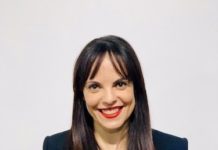According to Sikota Suuya Bones, media director at Dentsu Zambia, the general assumption is that the appetite for digital media has grown exponentially. Are clients ready to shift their budget from traditional media to new media that allows them to make real-time changes and track campaign performance with various KPIs?
Consumers and clients are going to adapt to, adopt and combine new and old media to ride the wave of change, but clients must first fully understand their core business and marketing objectives.
Setting goals
It is a given that the pandemic has disrupted every aspect of our normal life. However, in the case of digital, it has not been necessarily disrupted, but accelerated. As a business, we had always planned to build out digital as a service, but the pandemic resulted in a huge shift in marketing budgets – almost overnight. Digital budgets went from contributing less than 2% to overall marketing budgets to now taking up more than 20% of the pie.
Anticipating challenges
The biggest hurdle for a third-world market like Zambia is finding the right skill set. In 2020, marketing consultant Alberte Touani shared a quote below by Mike Berry (2013, Digital Marketing Conference 2.0: Deploying Digital Marketing for Competitive Advantage) in which he outlined the lack of understanding of the benefits of digital marketing in both small and large markets:
‘Digital marketing is still a mystery to many companies in Africa. Some think it is only about creating a website – that is just the start. Some turn to their agency for help, only to find the same old answers: print, outdoor and TV (if the budget is big enough). Others take it a step further to add a social media presence on Twitter and Facebook or even building brand awareness via banner ads and lead generation via Google AdWords. The digital-marketing picture in Africa is very fragmented at the moment, but that is completely normal at this stage of development of digital marketing in any country.’
Touani added that there is a lack of help or guidance offered to clients by local digital agencies.
Combining old and new
It is important to understand that very few African countries went into hard lockdown. As a result, only the middle-income earners and upwards made meaningful changes to the way they live – that is, working from home and shopping online. Conversely, the lower-income earners could not afford to stop trading or move their business to an e-commerce platform.
We need to remember that the lady selling vegetables on the side of the road and the farmworker are still desirable customers with purchasing power; they only lack the surplus income, meaning they cannot make changes to the way they live or work. Hence they will most likely continue with their old way of life in what is the ‘new normal’ for others.
Therefore, our task as communicators is to adapt to, adopt and combine the new media and old media. We are in a position where the digital divide has widened in Africa as the upper and middle-income earners have zoomed into 2021 – working flexible hours and, therefore, demanding more convenience. This is contrast to the lower-earning demographic who commute to their destinations and wait for their favourite television programme because they do not have access to streaming services, and who are still stuck in 2019. As marketers, our challenge is servicing both segments, providing solutions relevant to where they are right now.











